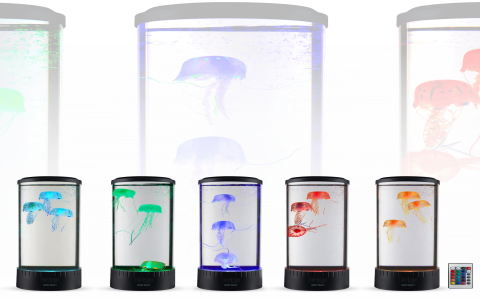Jellyfish Lanterns: A Dance of Light and Nature
In the depths of the ocean, where sunlight barely penetrates, a mesmerizing phenomenon occurs. The jellyfish, with its ethereal beauty and bioluminescent glow, has captivated the imagination of many. Often referred to as "jellyfish lanterns," these creatures not only illuminate the dark waters but also symbolize the delicate balance of marine ecosystems. This article explores the enchanting world of jellyfish, their role in the ocean, and the lessons they impart about nature’s wonders.

Jellyfish belong to the phylum Cnidaria, a group that includes corals and sea anemones. They have existed for over 500 million years, making them one of the oldest living creatures on Earth. Their simple body structure, consisting mainly of a gelatinous umbrella-shaped bell and tentacles, allows them to thrive in various marine environments. The bioluminescence exhibited by some jellyfish species serves multiple purposes, from attracting prey to deterring predators. This natural light display is akin to a lantern in the dark, guiding the way for both the jellyfish and the creatures that share its habitat.
The role of jellyfish in marine ecosystems is multifaceted. As both predators and prey, they contribute to the food web’s complexity. Jellyfish feed on small fish, plankton, and other marine organisms, helping to regulate populations within their environment. Conversely, they are a vital food source for various species, including sea turtles and certain fish. This interdependence highlights the importance of jellyfish in maintaining ecological balance. Their presence or absence can indicate changes in ocean health, making them essential indicators of environmental shifts.
However, the increasing prevalence of jellyfish blooms raises concerns about the state of our oceans. Factors such as climate change, overfishing, and pollution contribute to the rise in jellyfish populations. Warmer waters and nutrient-rich runoff create ideal conditions for jellyfish to thrive, often leading to overpopulation. These blooms can disrupt local fisheries, damage coral reefs, and even affect tourism. The phenomenon serves as a stark reminder of the delicate equilibrium within marine ecosystems and the impact of human activities on nature.
The beauty of jellyfish lanterns extends beyond their ecological significance. They have inspired art, literature, and even technology. Artists often depict jellyfish in various forms, capturing their grace and fluidity. In literature, they symbolize mystery and the unknown, evoking a sense of wonder about the ocean’s depths. Moreover, researchers are exploring the potential applications of jellyfish bioluminescence in fields such as medicine and environmental monitoring. The ability to harness this natural light could lead to innovative solutions for various challenges.
As we delve deeper into the world of jellyfish, it becomes evident that they are more than just fascinating creatures. They embody the intricate connections within marine ecosystems and serve as a reminder of the beauty and fragility of our planet. The jellyfish lanterns illuminate not only the ocean’s depths but also our understanding of nature’s complexities. By appreciating these remarkable beings, we can foster a greater respect for the environment and the delicate balance that sustains life.
In exploring the jellyfish’s role in our oceans, we uncover valuable lessons about resilience and adaptation. These creatures have survived for millions of years, evolving alongside the changing world. Their ability to thrive in diverse conditions speaks to the importance of adaptability in the face of challenges. As we confront our own environmental issues, the jellyfish serves as a symbol of hope and perseverance.
The enchanting glow of jellyfish lanterns invites us to reflect on our relationship with the ocean. It encourages us to consider our impact on marine ecosystems and the steps we can take to protect them. By fostering a deeper understanding of these creatures and their habitats, we can work towards a more sustainable future. The jellyfish, with its delicate beauty and vital role in the ocean, reminds us of the wonders that lie beneath the surface and the importance of preserving our natural world.



